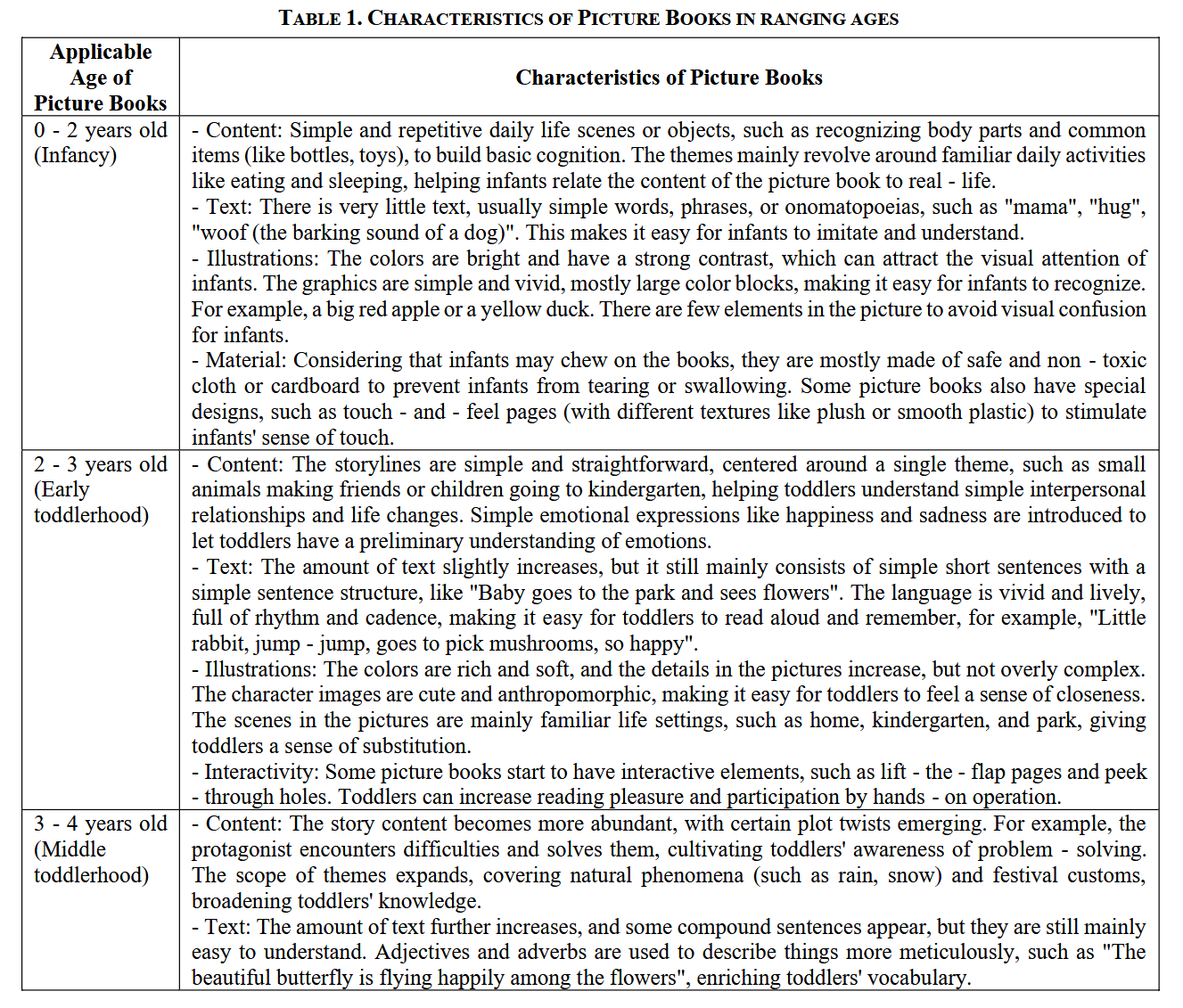Harnessing the Power of Picture Books: A Catalyst for Holistic Child Development in Early Education
DOI:
https://doi.org/10.70393/6a6574.323537ARK:
https://n2t.net/ark:/40704/JET.v1sp1a02Disciplines:
Educational PsychologySubjects:
Cognitive DevelopmentReferences:
12Keywords:
Picture Book, Early Education, Educational ToolAbstract
This paper delves into the multifaceted role of picture book reading in early education. By exploring the theoretical foundations, educational benefits, and practical applications of picture book - based instruction, it aims to highlight the significance of integrating picture books into early childhood curricula. Through a comprehensive review of existing literature, case studies, and analysis of teaching strategies, this research demonstrates how picture books can enhance children's language acquisition, cognitive development, emotional intelligence, and cultural understanding. The findings suggest that picture book reading is not only an enjoyable activity but also a powerful educational tool that can contribute to the holistic development of young children.
References
[1] M. Furner, J. . (2024). Digital online engagement in mathematics with math manipulatives, picture books, and geogebra to nurture confident young people for a stem/ai world. Quarterly Review of Distance Education, 25(1).
[2] Nal, Z. D. , Mentee, Y. , & Sevimli-Celik, S. . (2023). Analyzing creativity in children's picture books. Children's Literature in Education.
[3] Shao, Y. L. , & Shih, Y. H. . (2024). The effects of interactive electronic picture books on young children's oral expression skills.
[4] Talley, C. , https://orcid.org/0000-0002-2029-9500, marieth@uic.edu, Hughes, M. T. , Talley, C. , & https://orcid.org/0000-0002-2029-9500, et al. (2024). Beyond Stereotypes: How Individuals with Disabilities Perceive Their Representation in Picture Books.
[5] Ming, G. . (2023). A narrative study on the adaptation of picture books from classical texts --taking ju zhanpu's peach blossom garden picture book as an example. Writing / Xiezuo(1).
[6] Spates, K. , Monobe, G. , & James, T. . (2023). Picture books for young children of incarcerated parents: through the lens of bibliotherapy. Children & Society.
[7] Ricks, P. H. , Young, T. A. , & Koford, S. . (2023). Methods for selecting paired picturebooks for critical conversations. Reading Teacher, 76(6).
[8] Deliman, A. , Robertson, M. K. , & Turner, R. K. . (2024). Combining social–emotional learning competencies and contemporary concerns picturebooks to foster early literacy practices: an interdisciplinary approach. Reading Teacher, 78(3).
[9] Gabriel Duckels. (2023). The transformative potential of lgbtq+ children's picture books by jennifermiller. jackson, ms: university press of mississippi, 2022, isbn 9781496840004. 270 pp. us$25 (pb). Children And Society, 37(2), 657-658.
[10] Conica, M. , Kelly, L. , Nixon, E. , & Quigley, J. . (2023). Father and toddler language during shared book reading with text‐based and wordless picture books. Reading Research Quarterly, 58(4).
[11] Parker, L. , Wittman, K. , & Bintz, W. P. . (2024). Yes, charlotte died: using picturebooks to talk about, not avoid, the topic of death. Reading Teacher, 78(3).
[12] Okumura, Y. , Taguchi, S. , & Kanakogi, Y. . (2024). How are mental state references represented in english and japanese picture books? an analysis of the frequency of emotional and cognitive words and their relation to the self or others. Social Development, 33(3).

Downloads
Published
How to Cite
Issue
Section
ARK
License
Copyright (c) 2024 The author retains copyright and grants the journal the right of first publication.

This work is licensed under a Creative Commons Attribution 4.0 International License.
















